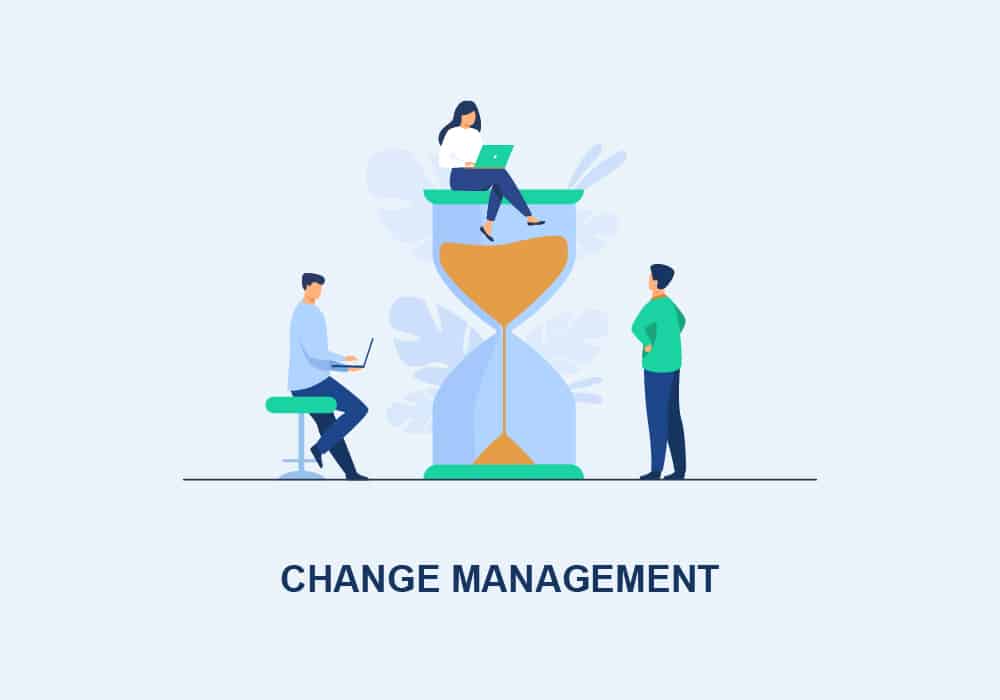- Introduction: The Hidden Crisis in Presentation Design Teams
- The Business Case for Investing in Presentation Designer Growth
- Career Growth for Presentation Designers: The Growth Matrix
- How to Implement Career Growth for Presentation Designers: Manager’s Toolkit
- Tailoring Growth to Different Designer Types
- Conclusion: Start Mapping Tomorrow’s Growth Today
Map Career Growth for Presentation Designers (Before Your Best People Leave)

Introduction: The Hidden Crisis in Presentation Design Teams
When Sarah, a senior presentation designer at a Fortune 500 company, handed in her resignation after three years of stellar work, her manager was blindsided. During her exit interview, Sarah’s reason was clear: “I just don’t see where I’m going here. There’s no path forward.”
This scenario plays out in design teams across industries. Presentation designers those specialized visual communicators who transform complex information into compelling visual stories are leaving organizations at alarming rates when they can’t envision their future. According to a 2021 LinkedIn workplace survey, 63% of designers cite “lack of career advancement opportunities” as a primary reason for changing jobs.
The cost? Replacing a skilled presentation designer can cost up to 200% of their annual salary when you factor in recruiting, onboarding, and productivity gaps. Beyond financial implications, you lose institutional knowledge and client relationships that take years to rebuild.
But there’s good news: with intentional career mapping, you can retain your top presentation design talent and build a thriving team that delivers exceptional work. This article will show you how.
The Business Case for Investing in Presentation Designer Growth
The ROI of investing in career development for presentation designers isn’t just about retention though that alone justifies the effort. Consider these compelling statistics:
– Companies with strong learning cultures experience 30-50% higher employee retention rates (source)
– Organizations that invest in employee development are 11% more profitable and twice as likely to retain their employees (Deloitte Human Capital Trends)
– Teams with clear career progression pathways report 34% higher engagement scores (Gallup Workplace Report)
Real-world examples demonstrate the value. At Slidecow, a consultant transformed into a highly sought-after presentation designer by systematically developing skills in PowerPoint, storytelling, and design. This individual eventually became so valuable they led company-wide training programs creating a multiplier effect on organizational capability. This progression from individual contributor to internal thought leader showcases the power of targeted skill development and internal visibility for growth. (source)
Beyond retention, presentation designers with growth paths contribute more strategic value. They evolve from slide creators to visual strategists who influence how entire organizations communicate. This evolution pays dividends in client presentations, investor pitches, and internal communications anywhere visual storytelling creates competitive advantage.
Career Growth for Presentation Designers: The Growth Matrix
The following matrix outlines clear progression paths for presentation designers at four levels. Use this as a foundation, customizing it to align with your organization’s structure and needs.
Level 1: Junior Presentation Designer
Key Skills Required:
– Software proficiency: PowerPoint, Keynote, Google Slides
– Basic design principles (typography, color theory, layout)
– Template implementation
– Basic photo editing and graphic creation
Typical Responsibilities:
– Building slides from established templates
– Converting content from other formats into presentations
– Basic slide cleanup and formatting
– Image sourcing and preparation
Growth Moves:
– Complete advanced PowerPoint/Keynote certification
– Develop a personal portfolio of redesigned slides
– Shadow senior designers on client calls
– Take on one presentation from concept to completion
Learning Resources:
– LinkedIn Learning PowerPoint Essential Training
– Presentation Guild membership ($199/year)
– “Slide:ology” by Nancy Duarte
– Creative Mornings events (free, local)
Level 2: Presentation Designer
Key Skills Required:
– Advanced software techniques (animations, custom graphics)
– Data visualization fundamentals
– Brand guideline implementation
– Basic storytelling and messaging
– Efficient workflow management
Typical Responsibilities:
– Creating presentations from briefs
– Developing custom graphics and icons
– Building reusable templates and components
– Basic storyboarding and content planning
– Collaborating with subject matter experts
Growth Moves:
– Lead a template redesign project
– Develop specialization in data visualization or illustration
– Create process documentation for the team
– Present a lunch-and-learn on design techniques
– Seek feedback from cross-functional partners
Learning Resources:
– “Resonate” by Nancy Duarte
– Adobe MAX design conference
– DataViz courses (Storytelling with Data)
– AIGA membership for networking and resources (source)
Level 3: Senior Presentation Designer
Key Skills Required:
– Strategic communication design
– Advanced storytelling and narrative structure
– Project management and client consultation
– Animation and advanced visual techniques
– Cross-platform presentation strategy
Typical Responsibilities:
– Consulting with stakeholders on presentation strategy
– Leading high-stakes, complex presentation projects
– Developing department-wide design systems
– Mentoring junior designers
– Contributing to pitch processes and methodologies
Growth Moves:
– Lead client-facing presentation workshops
– Develop a design system or style guide
– Initiate a presentation effectiveness metrics program
– Cultivate a specialty (executive comms, sales enablement)
– Cross-train in UX design or motion graphics
Learning Resources:
– Presentation Guild certification
– “The Presentation Design Book” by Emma Bannister
– Garr Reynolds’ Presentation Zen workshop
– Specialized software training (After Effects, Figma)
Level 4: Presentation Design Lead/Manager
Key Skills Required:
– Team leadership and development
– Strategic business communication
– Cross-functional collaboration
– Presentation ROI and metrics
– Budget and resource management
– Advanced consultative skills
Typical Responsibilities:
– Managing presentation design teams
– Establishing standards and processes
– Aligning presentation strategy with business goals
– Evaluating and implementing tools and technologies
– Advocating for design’s strategic value
Growth Moves:
– Establish a center of excellence for presentations
– Develop a company-wide presentation training program
– Lead a major rebrand or visual identity project
– Create methodologies for measuring presentation success
– Build relationships with executive stakeholders
Learning Resources:
– “Radical Candor” by Kim Scott
– Design leadership programs (InVision, IDEO)
– Executive presentation coaching
– Industry-specific conferences and networking
Career roadmap templates and visual presentations are powerful tools for both managers and designers to map this progression. These tools help visualize career paths, highlight milestones, and clarify the skills and experiences needed to advance at each stage. Many organizations are now creating dedicated presentation roadmaps as part of their talent management strategy.
How to Implement Career Growth for Presentation Designers: Manager’s Toolkit
Now that you have the framework, here’s how to put it into action with your team:
1. Individualized Growth Planning
Schedule dedicated career development conversations separate from performance reviews with each designer. Use the matrix to:
– Identify their current position on the growth path
– Determine 3-5 specific skills they need to develop
– Create a 6-month action plan with concrete milestones
– Connect them with mentors or projects that build needed skills
Tip: Document these conversations in a shared “growth document” that both of you can reference and update throughout the year.
2. Skill-Building Opportunities
Create deliberate skill-building moments:
– Assign stretch projects that develop new capabilities
– Rotate responsibilities across your team to broaden exposure
– Establish a skills-exchange program where team members teach each other
– Create an annual learning budget for each team member
– Build relationships with adjacent departments for cross-functional projects
3. Visibility and Recognition
Ensure your designers’ growth is visible within the organization:
– Create showcases where designers present their best work
– Nominate team members for internal awards and recognition
– Include designers in client meetings and strategy sessions
– Highlight design contributions in company communications
– Facilitate connections with senior leaders
4. Team Growth Culture
Foster a team environment that normalizes growth:
– Start meetings with quick skill-shares or design inspiration
– Create a team skills matrix where everyone can see who has which skills
– Establish a shared learning library with resources and case studies
– Host quarterly “growth retrospectives” to celebrate progress
– Develop peer feedback protocols that focus on skill development
5. Structural Support
Build organizational structures that support advancement:
– Work with HR to formalize the career matrix for your organization
– Create clear promotion criteria based on the skills matrix
– Establish “specialist” tracks for those who don’t want to manage
– Develop bridge roles that allow for lateral movement into related areas
– Build apprenticeship or mentorship programs that connect junior and senior staff
Tailoring Growth to Different Designer Types
Not all presentation designers want the same career path. As you implement your growth strategy, consider these common profiles:
The Technical Master wants to develop exceptional technical skills in presentation software and design. Create opportunities for advanced certification, specialized training, and technical mentorship.
The Strategic Consultant aims to influence business strategy through visual communication. Connect them with strategic initiatives, client-facing roles, and opportunities to develop business acumen.
The Creative Director aspires to lead design vision and creative teams. Provide chances to develop leadership skills, establish design systems, and influence creative direction.
The Entrepreneur may eventually want to freelance or start a business. Help them develop client management skills, business operations knowledge, and a portfolio they can leverage independently.
Professional associations like AIGA and design conferences such as Adobe MAX provide critical networking, learning, and professional development opportunities for each of these paths. Career growth for presentation designers can include transitions to senior designer, art director, or freelancing each requiring expanded portfolios, technical skills, and strategic approaches to personal branding. (source)
Conclusion: Start Mapping Tomorrow’s Growth Today
The best time to develop a career growth framework for your presentation designers was when you hired them. The second-best time is now before your Sarah hands in her resignation.
Remember that career mapping isn’t a one-time exercise but an ongoing conversation. Review and update your growth matrix annually to reflect changing technology, industry trends, and organizational needs.
By creating visible, achievable growth paths for your presentation designers, you’re not just reducing attrition you’re building a more capable, engaged team that delivers increasingly strategic value to your organization. You’re transforming presentation design from a production function into a strategic capability that drives business results.
Start today by scheduling a career mapping conversation with each designer on your team. Use the framework provided here as your starting point, and commit to making designer growth as important as design deliverables. Your team and your business results will thank you.


